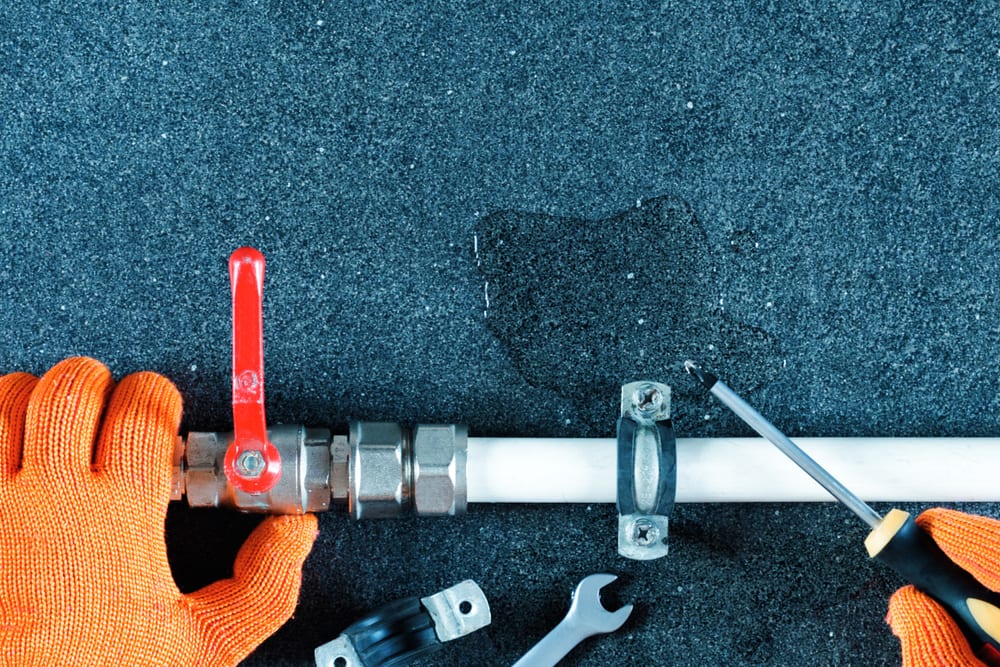Uncover Effective Ways to Identify Hidden Leaking Water Lines
Uncover Effective Ways to Identify Hidden Leaking Water Lines
Blog Article
We have stumbled on this great article about Hacks to detect leaks directly below on the web and thought it made sense to write about it with you in this article.

Early discovery of leaking water lines can minimize a prospective calamity. Some tiny water leaks might not be visible.
1. Check Out the Water Meter
Every house has a water meter. Inspecting it is a surefire way that assists you discover leaks. For starters, turn off all the water sources. Make sure no one will certainly purge, use the tap, shower, run the washing maker or dishwashing machine. From there, go to the meter as well as watch if it will certainly transform. Given that no person is using it, there need to be no movements. That indicates a fast-moving leakage if it relocates. If you detect no adjustments, wait an hour or 2 as well as inspect back once more. This indicates you might have a sluggish leakage that can even be below ground.
2. Examine Water Consumption
Evaluate your water expenses and track your water intake. As the one paying it, you must observe if there are any inconsistencies. If you find sudden changes, in spite of your consumption coinciding, it means that you have leaks in your plumbing system. Bear in mind, your water bill must drop under the same variety on a monthly basis. A sudden spike in your bill indicates a fast-moving leakage.
A consistent rise every month, even with the exact same behaviors, reveals you have a slow leak that's likewise gradually rising. Call a plumber to thoroughly inspect your residential or commercial property, specifically if you feel a warm area on your flooring with piping beneath.
3. Do a Food Coloring Test
When it comes to water intake, 30% comes from bathrooms. If the shade somehow infiltrates your dish during that time without flushing, there's a leakage in between the storage tank and also bowl.
4. Asses Exterior Lines
Don't neglect to examine your outdoor water lines too. Ought to water seep out of the connection, you have a loose rubber gasket. One tiny leak can waste bunches of water and spike your water costs.
5. Inspect and also Evaluate the Scenario
Home owners ought to make it a behavior to check under the sink counters as well as also inside cabinets for any type of bad odor or mold and mildew development. These two red flags suggest a leakage so punctual focus is called for. Doing routine examinations, even bi-annually, can save you from a major issue.
Inspect for discolorations as well as compromising as a lot of appliances and pipelines have a life expectations. If you presume dripping water lines in your plumbing system, don't wait for it to escalate.
Early discovery of dripping water lines can reduce a possible catastrophe. Some tiny water leaks may not be visible. Examining it is a surefire means that helps you discover leaks. One small leakage can waste loads of water and also increase your water expense.
If you believe leaking water lines in your plumbing system, don't wait for it to intensify.
WARNING SIGNS OF WATER LEAKAGE BEHIND THE WALL
PERSISTENT MUSTY ODORS
As water slowly drips from a leaky pipe inside the wall, flooring and sheetrock stay damp and develop an odor similar to wet cardboard. It generates a musty smell that can help you find hidden leaks.
MOLD IN UNUSUAL AREAS
Mold usually grows in wet areas like kitchens, baths and laundry rooms. If you spot the stuff on walls or baseboards in other rooms of the house, it’s a good indicator of undetected water leaks.
STAINS THAT GROW
When mold thrives around a leaky pipe, it sometimes takes hold on the inside surface of the affected wall. A growing stain on otherwise clean sheetrock is often your sign of a hidden plumbing problem.
PEELING OR BUBBLING WALLPAPER / PAINT
This clue is easy to miss in rooms that don’t get much use. When you see wallpaper separating along seams or paint bubbling or flaking off the wall, blame sheetrock that stays wet because of an undetected leak.
BUCKLED CEILINGS AND STAINED FLOORS
If ceilings or floors in bathrooms, kitchens or laundry areas develop structural problems, don’t rule out constant damp inside the walls. Wet sheetrock can affect adjacent framing, flooring and ceilings.
https://www.servicemasterbyzaba.com/blog/how-to-detect-water-leakage-in-walls/

Do you like reading up on Hacks to detect leaks? Give feedback directly below. We would be delighted to find out your thoughts about this write up. We are looking forward that you visit us again in the future. Those who enjoyed reading our blog posting kindly make sure you remember to pass it around. Thanks for going through it.
Quick help? Contact. Report this page